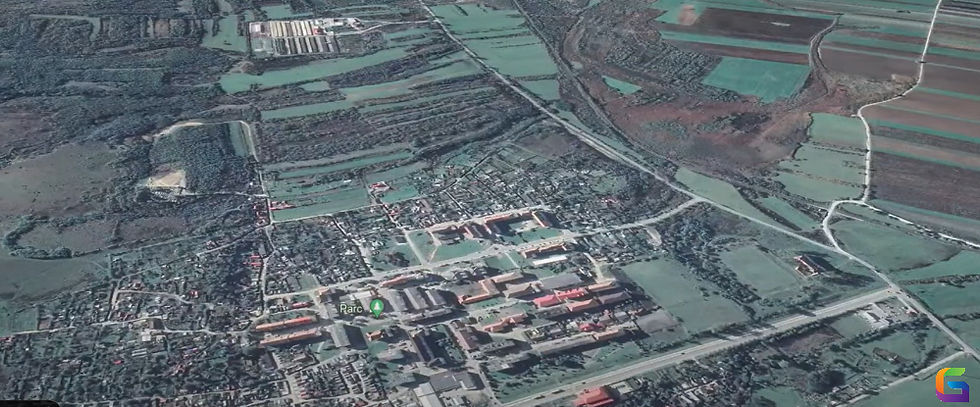What's the difference between Google Earth and Google Maps
- Anvita Shrivastava

- Aug 6, 2025
- 3 min read
Developers, data analysts, urban planners, and location intelligence specialists must comprehend the subtle distinctions between Google Earth and Google Maps in the ever-changing field of geospatial technology. Despite being part of Google's vast geospatial ecosystem, the two platforms' designs, use cases, and APIs differ greatly in terms of developer extensibility, integration potential, data granularity, and visualization capabilities.

Purpose and Core Functionality
Feature | Google Maps | Google Earth |
Primary Use | Navigation, real-time routing, location-based services | 3D visualization, virtual globe, terrain exploration |
Audience | Consumers, businesses, mobile users | Researchers, educators, GIS professionals |
Interface | 2D map + satellite + Street View | High-resolution 3D terrain and photorealistic imagery |
Google Maps is optimized for commercial location services, local discovery, real-time navigation, and API interfaces into applications that interact with users.
In contrast, Google Earth provides a comprehensive 3D geographic exploration experience that is perfect for performing terrain-aware presentations, replicating landscapes, and studying environmental change.
Data Layers and Accuracy
Google Maps Data Stack
Layered tiles on vector maps
Traffic and transit statistics in real time
Points of Interest (POIs) and dynamic business listings
Images from Street View
Real-time data through the APIs of the Google Maps Platform
Google Earth Data Stack
Elevation models and 3D terrain meshes
Archive of historical satellite imagery
Support for spatial annotations in KML/KMZ files
Urban areas using high-resolution photogrammetry
Datasets related to geology and ecology (via Earth Engine integration)
Whereas Google Maps emphasizes real-time vector tile streaming for quicker user experience and routing calculations, Google Earth offers a richer temporal and spatial resolution for terrain study.
Developer APIs and Integration
Google Maps Platform APIs
Maps API in JavaScript
Roads API, Distance Matrix, and Directions
Places API (autocomplete, ratings, and search)
Maps SDK for iOS and Android
Static API for Street View
Perfect for:
Applications for ride-sharing
Search for local businesses.
Mapping inside
Monitoring assets
Google Earth Engine & Web-based Earth Studio
Python and JavaScript APIs for analysing satellite images
Analysis at the planet scale for datasets at the petabyte scale
Earth Studio for satellite-layered video animation
KML-based narrative and data overlays
Perfect for:
Monitoring of climate change
Classification of land use
Modelling the environment
Geographical narrative and modelling
2D vs 3D Visualization
Limited 3D rendering via WebGL is supported by Google Maps in a few locales. The majority of its tiles are still available in raster or 2D vector formats.
Using Cesium-like spatial engines, Google Earth provides native 3D globe rendering with volumetric textures, realistic buildings, and elevation contours.
Use Case Example:
Google Earth Pro or Web should be used by urban planners to simulate shadow studies or building footprints, while delivery services require Google Maps' routing API stack.
File Format and Customization
Feature | Google Maps | Google Earth |
Supported Format | JSON, GeoJSON, Lat/Lng pairs | KML, KMZ, GIS shapefiles (via import) |
Custom Layers | API-based overlays | Full geospatial scripting, KML layers |
Historical Data | Limited (time slider for traffic only) | Yes – multi-year archive of imagery |
While Maps limits customisation to parameters and layers that are constrained by the API, Google Earth allows for more complex spatial storytelling through the use of Keyhole Markup Language (KML), including time-animated layers.
Offline Access and Software Options
Google Maps: Mobile offline maps (just 2D and simple routing)
Complete offline access to elevation profiles, KML projects, and 3D globes is provided by Google Earth Pro (Desktop).
Google Earth Pro is still the best option for outdoor work in places with poor internet or for high-performance geospatial simulations.
Integration with Google’s Ecosystem
Google Maps has extensive integrations with Firebase, Android OS, and Google Ads.
Google Earth integrates with YouTube (via Earth Studio animations), Google Earth Engine, and Google Cloud.
Google Earth is superior at high-resolution visualization, historical imagery analysis, and immersive storytelling, whereas Google Maps is designed for real-time, interactive location-based applications. The depth of research, visualization fidelity, and integration requirements all play a role in the platform selection for geospatial professionals and developers.
The present is powered by Google Maps. The depth of space and time can be seen with Google Earth.
For more information or any questions regarding Google Earth and Google Maps, please don't hesitate to contact us at
Email: info@geowgs84.com
USA (HQ): (720) 702–4849
India: 98260-76466 - Pradeep Shrivastava
Canada: (519) 590 9999
Mexico: 55 5941 3755
UK & Spain: +44 12358 56710




Comments